
A Pair of Socks Finally Finished
Hello friends,
Back in May of 2024, my friend Karyn and I traveled down to Gore for the 45˚Fibre Festival. And while we were there, she bought me a 100 gram skein of 4 ply
Bluefaced Leicester sock yarn in the colourway Meadow Mornings (Almost) from the company Purple Sprouting, as a gift for hosting her for a week.
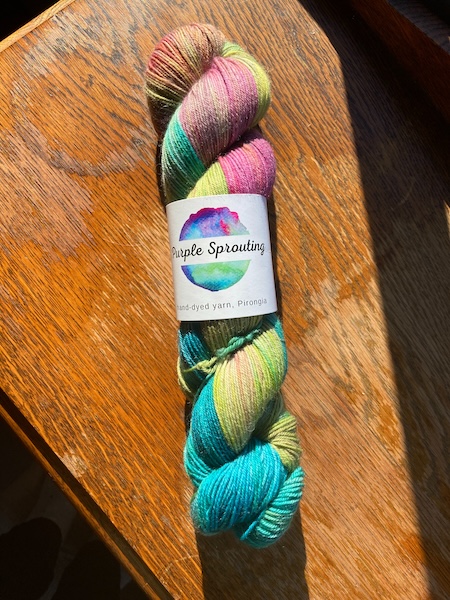
I really loved the shades of pink, teal, and lime green, so of course I turned the skein into a ball of wool straight away, with the intention to knit them into a pair of socks using my plain sock pattern I've developed over the years.
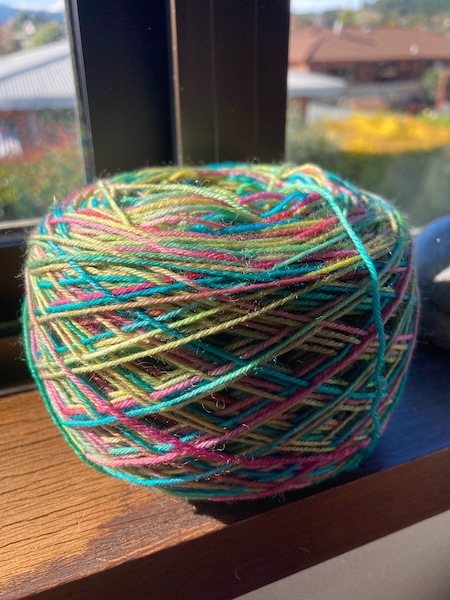
But when I started knitting the socks up, I wasn't happy with the progress I'd made. I really didn't like how they looked knitted up in this pattern...so I frogged the sock I was working on, and put it away for many months. In the meantime I knitted and finished my On the Porch blanket by Fifty Four Ten Studios, and also my Gro Hat by Fiber Tales.
After I finished those projects I pulled out my sock knitting bag and looked at the Purple Sprouting sock yarn once again. Over the coming weeks I did a whole lot of searching on the internet looking at various sock patterns to see what would fit the yarn. I eventually settled on Tin Can Knit's Rye Light sock knitting pattern, which I had already bought previously. It's a simple sock pattern that I've always wanted to try.
Once I got started the socks knitted up very quickly, and within 3 weeks I had a new pair of socks. The socks ended up being a little big for me, but they're perfect as slouchy socks for around the house. I think next time I use this knitting pattern, I'll go down a smaller size.
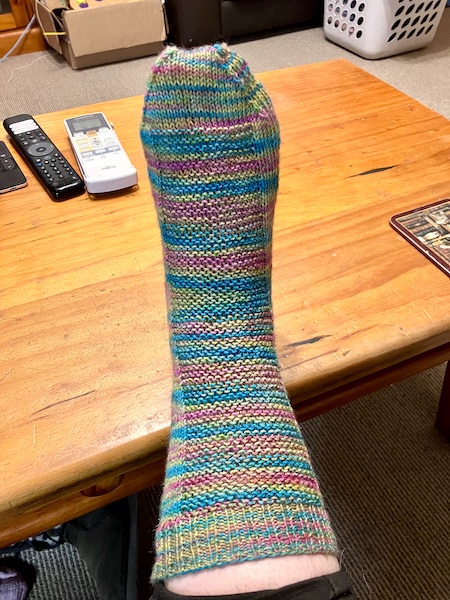
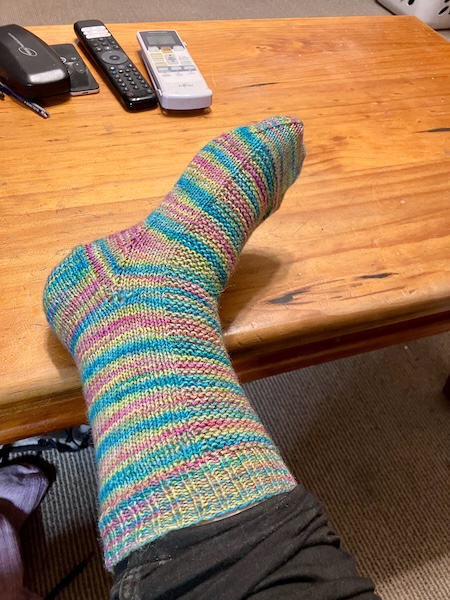
The socks are super warm, and very soft, and I really liked knitting up the Blue Faced Leicester yarn.
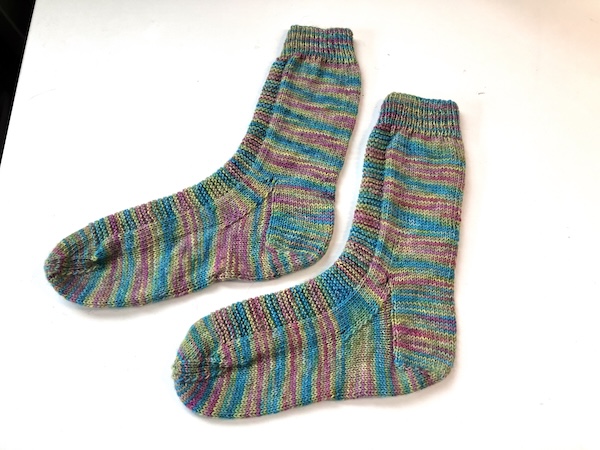
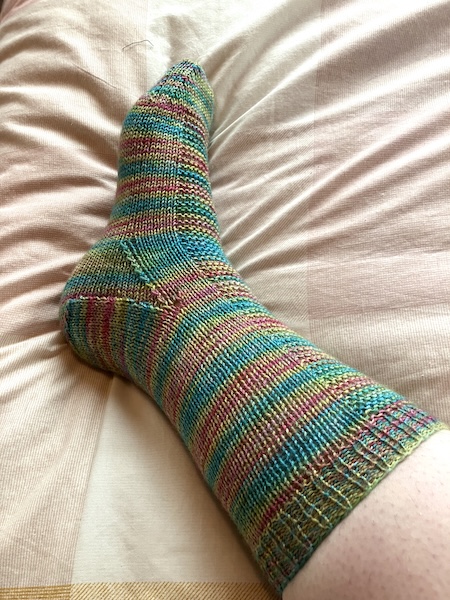
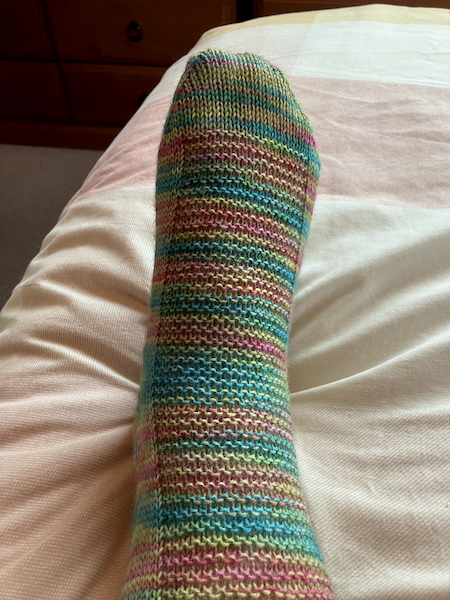
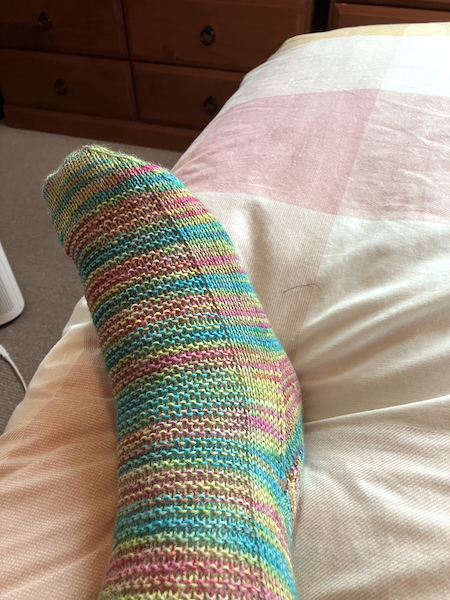
I haven't had a chance to wear these socks yet, but I'm sure they'll keep my feet toasty while wearing them in gumboots while gardening.
Have a wonderful day
Julie-Ann
Want to discuss my post? Feel free to chat with me on Instagram or Mastodon or Bluesky.
Yeah Yeah Yeah Yarn's The Dark Woods Solstice Yarn Advent
Hello friends,
Back in May while on Instagram, I noticed that Yeah Yeah Yeah Yarn in Dunedin had up for pre-order a winter solstice yarn advent called 'The Dark Woods'. The advent theme up on Instagram was totally in the vibe that I love, with forests, woodland creatures like foxes and owls, and deep dark night colours. Twelve days of the advent had 20 gram mini skeins of 4 ply sock yarn, and the thirteenth day was one 100 gram skein of 4 ply sock yarn.
So I excitedly handed over my money, and patiently waited until the yarn advent arrived at the end of June. With the yarn advent all packaged up in a box, I then waited impatiently for the 1st of July start date, and opened one advent yarn package each day for the next 13 days.
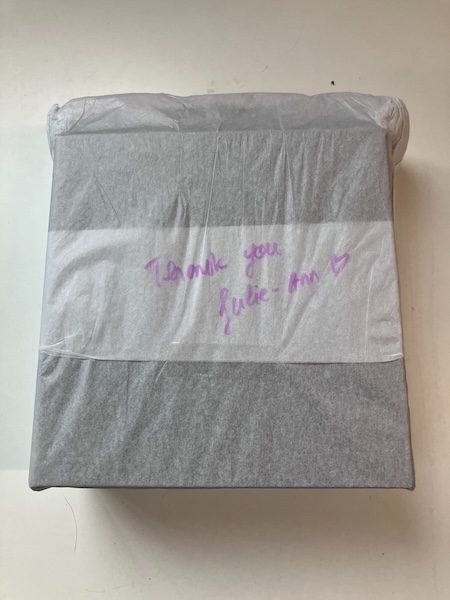
And I was so pleased with the yarn advent colourways as I opened them day by day. The first day started with a beautiful orange and brown fox colourway, and as the days went on, the colours got moodier and darker. By the time the advent got to the last couple of days daylight began to appear in The Dark Woods mini skeins, and the final 100 gram skein was a beautiful soft dawn.
I thought I'd share with you all the colours in 'The Dark Woods' day by day, with the top left being day 1, and the bottom right being day 13.
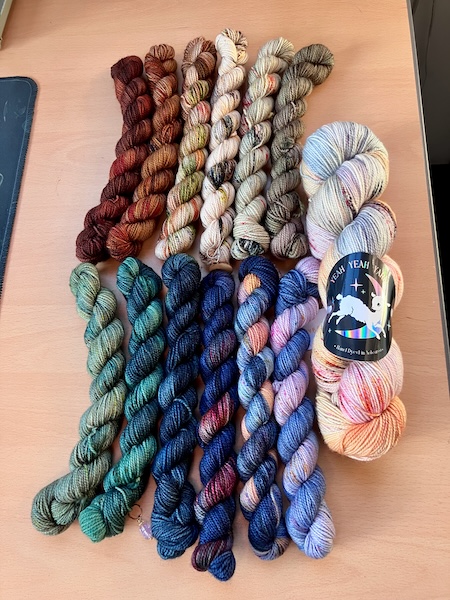
The first 6 days mini skeins included a really lovely gradient of brown toned colours.
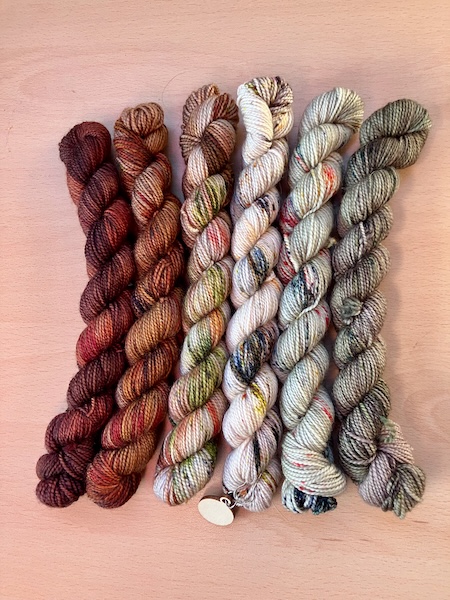
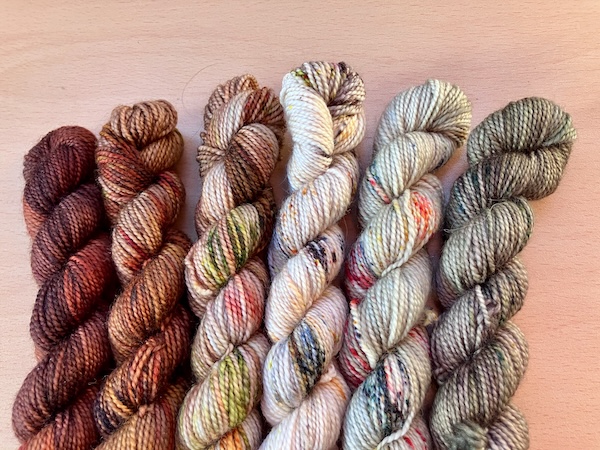
And the next 6 day skeins really worked lovely together as well with deep greens merging into dark blue nights, and then the approaching dawn.
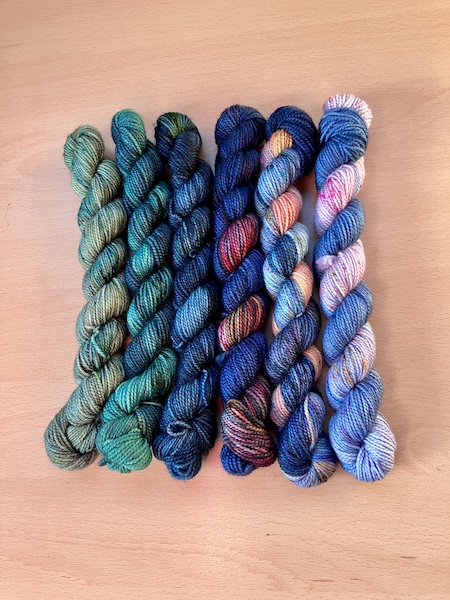
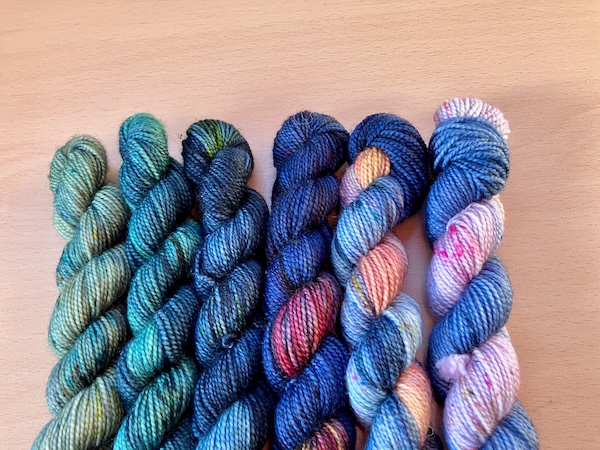
And finally, the day 13 100 gram skein of Day Break sock weight yarn was just stunning in soft shades of blues, apricots, and pinks.
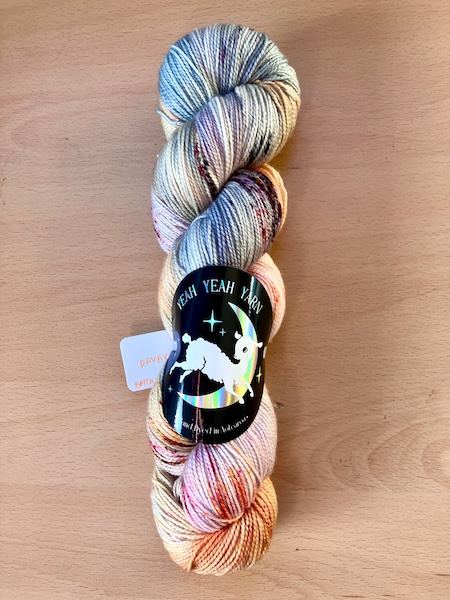
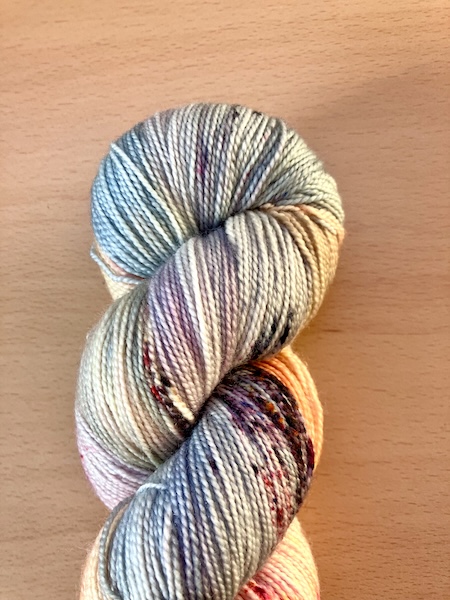
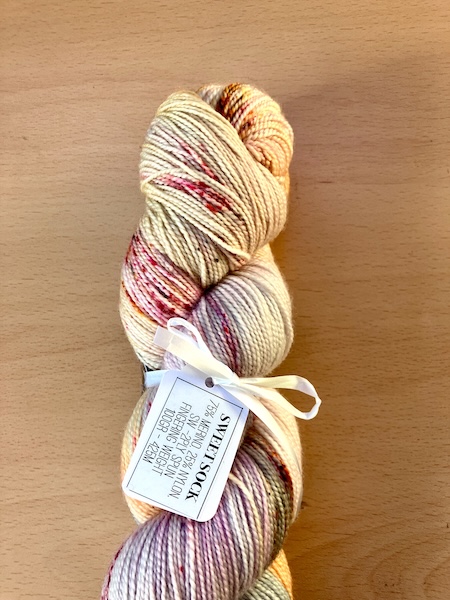
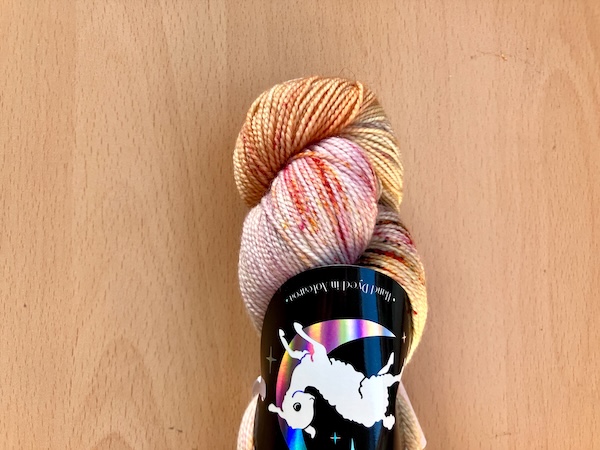
I'm really pleased with the yarn advent, and thought it was well worth the money I spent. I've always wanted to do a yarn advent, but the price of the 25 day advents were too expensive for me to justify. But this 13 day yarn advent was enough to be pleased to do it just once. The colourways were just what I hoped for, and I'm especially happy with the day 13 100 gram skein of yarn.
I now need to knit up the yarn advent into a wonderful project. I would like to use all the colours in one project, but it's taking me a while to find a project that is truly worth all the beautiful yarn. I have many project tabs open on Ravelry, but for now I'm undecided...
Have a wonderful day
Julie-Ann
Want to discuss my post? Feel free to chat with me on Instagram or Mastodon or Bluesky.
Knitting the Gro Hat By Fiber Tales
Hello friends,
I have a knitting project start and finish to show you today. Ever since I finished my latest blanket some months ago, I've been procrastinating over which knitting project to do/finish next.
I've got a pair of socks, and also a set of leg warmers on the go, but I wasn't feeling like working on them while it was so warm outside. And then I wasn't happy with my socks so I frogged them, and then procrastinated some more about knitting the yarn up with a different sock pattern..
But then while I was cleaning up my craft room I found a knitting project bag with 100 grams of DK weight possum/merino yarn that I'd hand dyed a sage green for a knitting project with the pattern Gro Hat by Fiber Tales. I instantly fell back in love with the project, especially the leaf pattern around the hat, and started knitting the pattern.
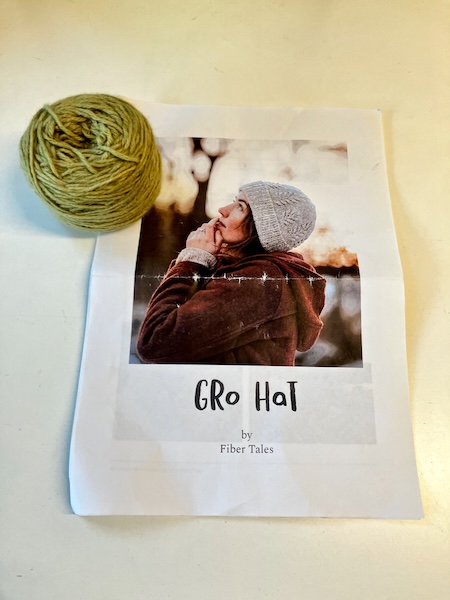
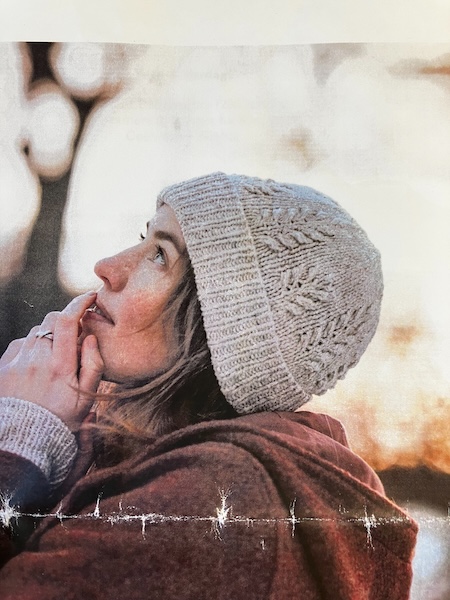
First up I needed to learn a new cast on method for the edge of the hat, Italian Tubular cast on, which ended up being similar to other cast on methods I've learned, so that was okay. Then I knitted the ribbing at the bottom of the hat, which folded over at the end. After that was switching needles to a bigger size, and plain knitting for a while. All that was relatively easy.
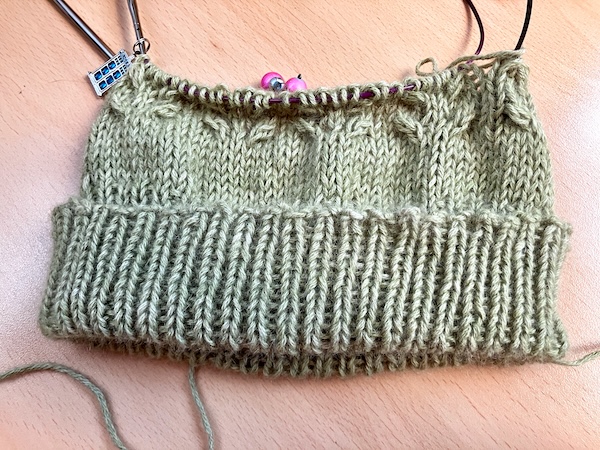
After that came all the hard parts, and at this stage I wish I had put in a safety line before the cable and lace section, as it would've made the pattern knitting way less stressful. My advice to anyone considering this pattern would be to do the following in the cable and lace sections: put in a safety line at the start, put stitch markers and the beginning of each repeated section, so it's easy to frog back to a section in a row if necessary. And the last thing I would suggest is to knit the k1yok1 repeats much looser than you think, because if that repeat is too tight, it makes it super hard to do the cables in the next row.
Once the tricky part of the cables and lace work is done, the rest of the hat is pretty easy to knit until the finish. I have done both cables and lace work in knitting before, but this pattern was tricky for me to do. Just a thing to note is that this pattern has only one size, and you can't upscale it or downscale it easily without ruining the repeats.
And here is the finished Gro Hat knitted up before blocking, as you can see, you can see the stitches between the DPNs, are slightly wider vertical rows. It was unfortunate, but I hoped it would come out in blocking.
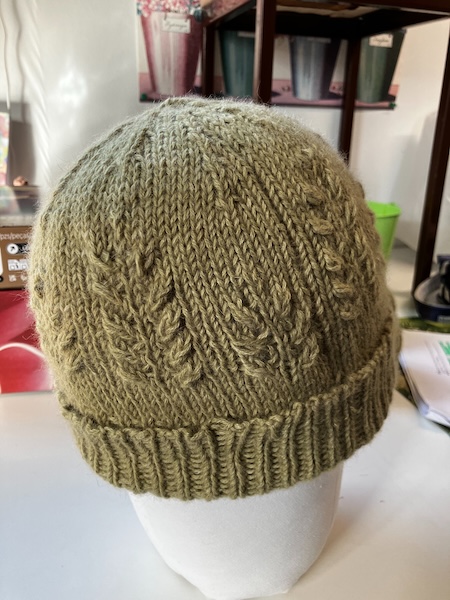
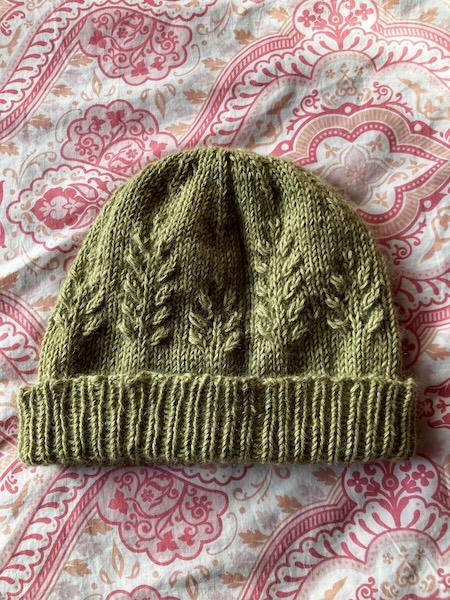
I gave the hat a nice and long soaking in luke warm water and wool wash, and then blocked the hat using a head mannequin covered in a plastic bag.
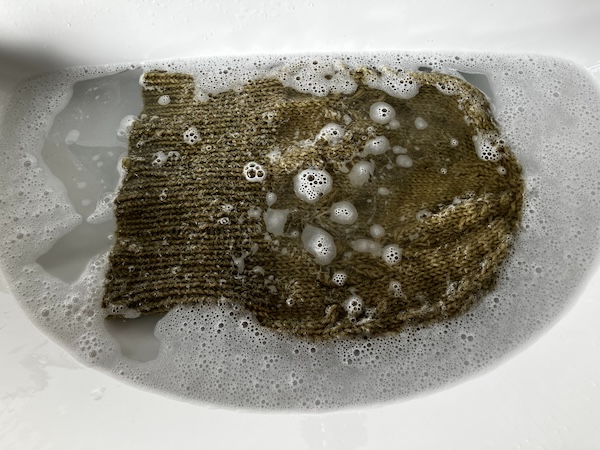
And here is the finished hat.




I absolutely love the finished hat, and especially in the sage colour, as it just really matches so well with the leaves. I'm glad that I stuck it out and finished the hat despite the trickiness of the cable and lace section. I think the pattern is totally worth knitting but it's good to be aware of the trickiness. I can't wait to wear this hat all winter long.
Have a wonderful day
Julie-Ann
Want to discuss my post? Feel free to chat with me on Instagram or Mastodon or Bluesky.
Gotland Fleece Project - Scouring, Washing, and Storing
Hello friends,
Back in April 2023 my husband and I went on a road trip to the Mackenzie country to celebrate our wedding anniversary. On the way home we stopped off at The Oamaru Textile Emporium (TOTE) to do a little crafting shopping. I'd been eyeing up their raw fleeces online, and spent some time in the store when I got there, going through all the raw fleeces they had available until I found the one I'd been looking for.
I've wanted to process and spin a Gotland sheep fleece for a while, and they had this beautiful chocolate grey fleece in the store. It came home with us, making the whole car smell quite sheepy as we traveled back to Dunedin...
When we got it home, I took the fleece out of it's plastic bag, and laid it out to see exactly what I had bought.
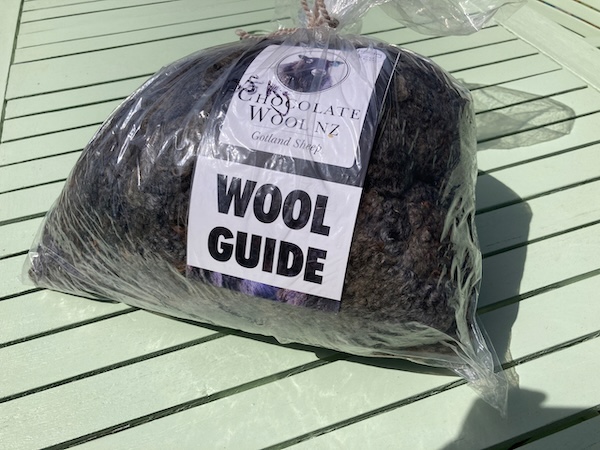
Back when I lived in Wellington I belonged to Creative Fibre New Zealand, and was an active member of the Tawa Fibrecrafts group. One of the many benefits of belonging to Creative Fibre NZ is taking part in one of their many courses, including one I attended on choosing raw fleeces, sorting them, and processing them.
I was very happy with the fleece when I laid it out, there were no second cuts, the fleece was in great condition, and all the unspinnable parts of the fleece had already been removed for me.
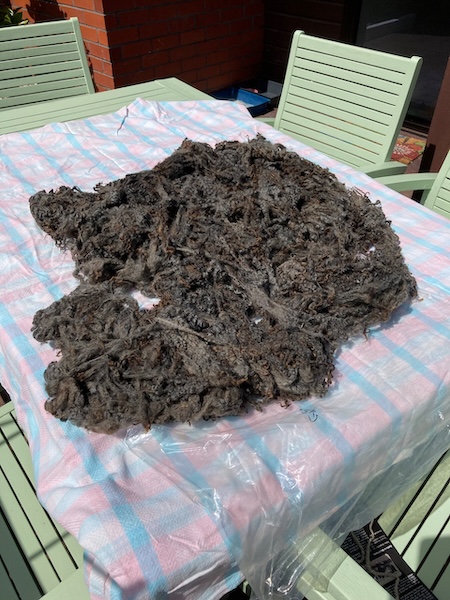
I invested in two books, The Spinner's Book of Fleece by Beth Smith, and Camaj Fibre Art's The Art of Washing Wool, Mohair, and Alpaca by Mary Egbert. These two books told me everything I needed to know about scouring and washing gotland fleece. Recently, now in 2025, I decided to scour and wash the Gotland fleece using Unicorn Fiber Power Scour, which is a wonderful detergent for scouring and washing unwashed fleeces. It's very gentle, but also removes all the dirt and lanolin from a fleece.
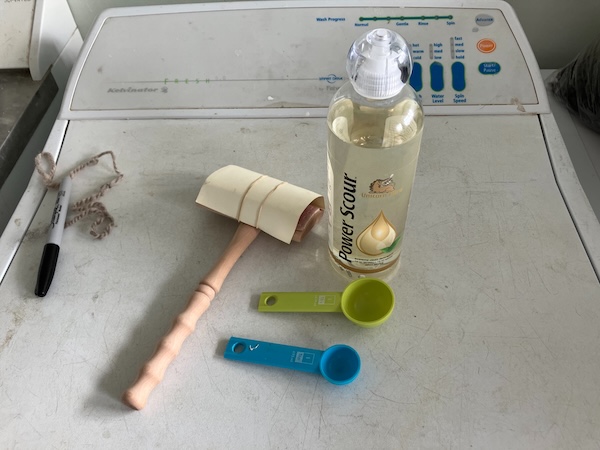
Filling a 6L tub with 60˚C water from out of our laundry room tap, I mixed in the calculated amount of Unicorn Scour Power mentioned on the bottle, and added the Gotland fleece which I'd put into laundry bags, and left each bag one at a time to gently soak in the scouring mix for 15 minutes.
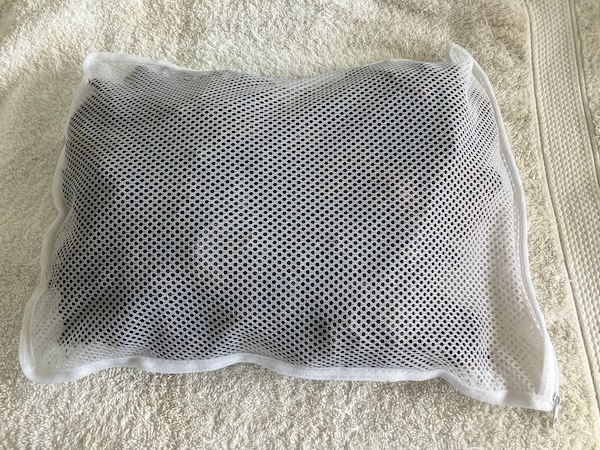
As you can see from the photos, the scouring water turned a very muddy brown during the process, as the dirt and lanolin was removed from the fleece.
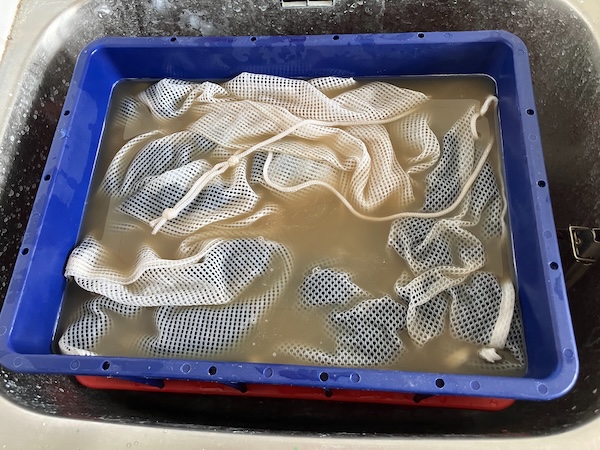
At the end of 15 minutes I lifted the laundry bag full of fleece out of the dirty water, and very gently squeezed out all the excess liquid. I then rinsed out the plastic tub to remove all the dirt and liquid, and then filled the tub back up with clean, hot water. I put the laundry bag back into the tub to rinse out the fleece for a minute with gentle swishing, to help remove even more dirt and lanolin from the fleece. At the end of this, I lifted out the laundry bag, removed the clean fleece, and then spun it in a hand-cranked salad spinner until it was as dry as it could be. From there, the fleece was placed in plastic containers which had good ventilation holes, they were laid out in the sun over the next couple of days until the fleece was dry.
Once dried, I placed most of the Gotland fleece into a brown paper shopping bag, and put it away in storage.
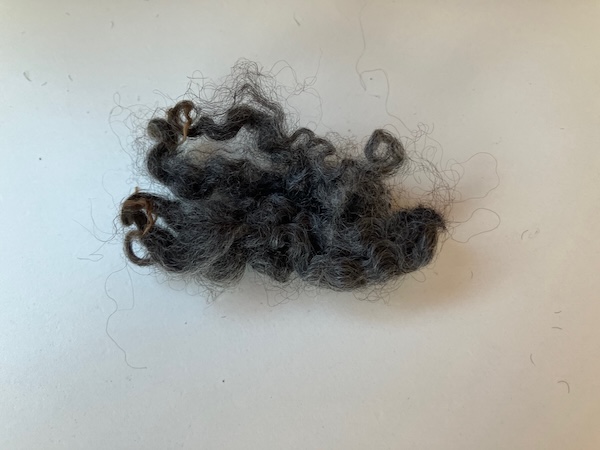

I flick carded a small sample of Gotland fleece remaining, so I could check the quality, and as you can see, the resulting clean fleece has a beautiful crimp, and the colour is a dark smoky grey/brown colour.

The handle is very soft, and over the coming months, I'll slowly flick card and then spin up some Gotland fleece singles. From the resulting yarn, I think I'll make a cozy winter jersey.
Have a wonderful day
Julie-Ann
Want to discuss my post? Feel free to chat with me on Instagram or Mastodon or Bluesky.




